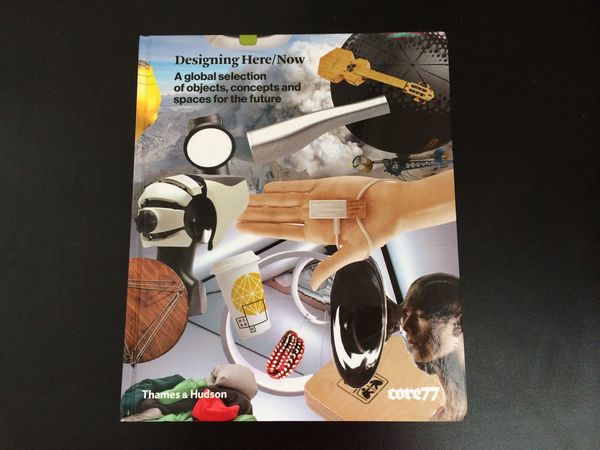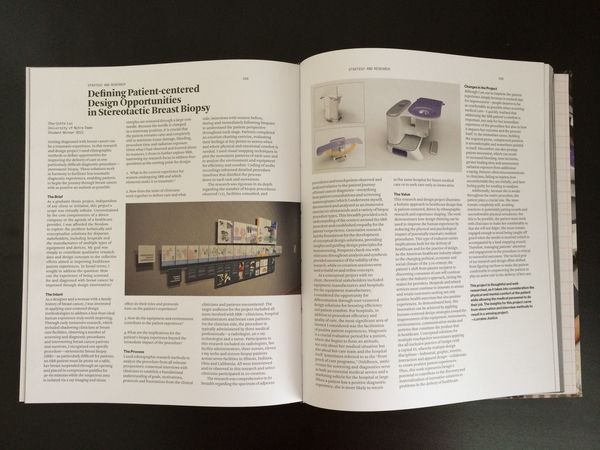University of Notre Dame Visual Communication Design recent graduate Charlotte Luxthesis project was selected to be featured in Designing Here/Now, a book recently published by Core77. Read below from the Core77 website:

With a family history of breast cancer and a recent graduate of The University of Notre Dame's ID program, Charlotte Lux embarked on improving Stereotactic Breast Biopsies. For those without an MD this critical procedure for breast cancer is used to locate a benign or cancerous growth. As beneficial as this procedure is, it often is uncomfortable and stressful for the patient; often requiring patients to lay still for up to 60 minutes during examination. Charlotte Lux took notice of this and sought to improve it through her Core77 Design Award winning design solution.

Getting diagnosed with breast cancer can be a traumatic experience. In this research and design project, ethnographic methods were used to define opportunities for improving the delivery of care in one particularly difficult diagnostic procedure—stereotactic biopsy. These solutions work in harmony to facilitate less traumatic diagnostic experiences, enabling patients to begin the journey through breast cancer with as positive an outlook as possible.
Charlotte Lux throughly analyzed and observed the entire medical procedure. You can see her presentation here.
How did you learn that you had been recognized by the jury?
I was skimming through articles on Core77 when I saw the announcement of winners. It's such an honor to have my project recognized!
What's the latest news or development with your project?
As a conceptual research and design project, my hope was to add to the current movement aimed at changing the way healthcare practitioners and medical equipment manufacturers approach the delivery of care, using the stereotactic breast biopsy experience as an example. To that end, I've shared this work with a few breast care clinicians and a representative from a medical equipment manufacturer. Bringing these design solutions to fruition would require further product development work.
During the examination the patient is often alienated. Lux offers ways to counter this alienation and improve the system overall.
What is one quick anecdote about your project?
To immerse myself in the patient experience, I spent time in a number of hospitals over the course of a year--observing procedures, talking to patients and clinicians. Not having a medical background, I knew seeing the blood and very large needles would take some getting used to. But it was surprising how little that bothered me and how much more difficult it was seeing patients go through something as physically and emotionally trying as this cancer diagnostic procedure. The hardest thing for me was not only watching these women go through this, but the lack of closure I was able to get on each observed case. Patients received their results days after being screened and, not wanting to jeopardize privacy, I never learned of their results. Being left to wonder "whatever happened to that patient?" proved to be more emotionally draining that I had anticipated.
What was an "a-ha" moment from this project?
The biggest a-ha moment for me was the realization of how critical the patient's role is in the biopsy procedure. Describing the process, every nurse, surgeon, and x-ray technologist talks about how important it is for patients to remain still while they isolate what is often a tiny lesion in the breast using x-ray imaging and targeting it with a needle. The patient lies on her stomach, which doesn't sound so bad. But in observing this myself and talking with patients while they lay with one breast compressed between two plates through an opening in the hard table, I began to realize how difficult and important their job really is. Not wanting to complain, many patients tell the nurse they're comfortable when they really aren't. After 30, 40, and sometimes up to 60 minutes of lying completely still, it takes a toll on their ribs, neck, and back, and they fidget, which can cause tissue damage and unnecessary radiation exposure when x-rays need to be retaken. So, it became apparent that patients need to be empowered to communicate and work with clinicians so they are as comfortable as possible. This realization drove design solutions that facilitate patient control over comfort and uninterrupted interaction with clinicians.